How jeans can be altered
One of the big disadvantages of jeans over tailored trousers is their inability to be altered.
It means that, over the years, they’re less able to adapt as you change shape. And given that a key appeal is their longevity - that in fact, jeans get more comfortable and beautiful with age - this is significant.
Of course, they don’t necessarily have to fit as precisely as flannels. A little looseness isn’t necessarily bad, and there is more leeway for being cinched by a belt. But still, you do want them to fit as intended.
There are three main reasons jeans are difficult to alter. First, there isn’t the same inlay (spare cloth) inside the seams. Second, the waistband is one piece rather than two. And third, the fading of denim makes alterations more visible.
However, I’ve had three pairs of jeans altered in recent years, and I’ve been happy with all of them. So I thought I’d show here how those issues can be mitigated.
It is true that jeans don’t have the same amount of inlay as tailored trousers, and certainly bespoke ones.
However, there is some. Both the inseam and outseam on the legs have a little - around three-quarters of an inch on the outseam, and half an inch on the inseam. The outseam is the selvedge you see when the bottoms of jeans are turned up.
This inlay can’t be reduced to zero, otherwise the jeans would fall apart. You need some room for the stitching. But it can be reduced a little - to around three-eighths of an inch on the outseam and a quarter on the inseam.
You can see these altered - before and after - in the images the outseam (above) and the inseam (below). The altered pair are my first Levi’s Lot.1 jeans and the unaltered pair are a new purchase from them.
Widening the legs of jeans by five-eighths of an inch is not a lot, but it is noticeable.
For example, the problem with my first pair of Lot.1 was that I picked a leg line that was too slim. The opening at the bottom was just over seven inches (diameter), and most I’ve had since have been seven and a half, or almost eight.
So we’re talking about small differences anyway, where a half inch does make a difference. Below is how that alteration looks on the outside. It's softening with wear and the occasional iron.
These small changes are also significant when it comes to improving fit, rather than style.
The jeans below are my vintage Levi’s 501s, covered on PS here. Fit is always a problem with vintage, and particularly in something hard to find like 501s. Even in Japanese vintage stores, where everything is laid out by age, size and length, it’s hard to find the perfect combination.
My pair were great in many respects - the rise, the waist, the fade. But they were always a bit tight in the hips and thighs.
So we made that same adjustment on the outseam, to add some extra room. Of course, there is no inseam on the hips, so the change is even smaller. But it has definitely made them more comfortable.
Changes like this, to make jeans more comfortable, are often limited by the waistband.
On tailored trousers, the waistband is made in two pieces, with a seam at the back that is a continuation of the one in the seat. Making them bigger or smaller is often just a case of altering that seam.
The waistband on jeans is made in one piece. So you can’t make the waist bigger or smaller without cutting the waistband, or replacing it.
Replacement can be tricky if you don’t have more of the same denim, and a new waistband will be a different colour, until it has been washed many times. The only thing you can do there is wash it a lot separately, before attaching it.
With the waistband I wanted to alter, this wasn’t an issue, as they were my bespoke white ones (above).
But unfortunately, we didn’t have any more of the same denim left. So we cut the waistband instead, putting a new seam on both sides.
This doesn’t look great in the image above, but I don't mind because I usually wear a belt with white denim (otherwise I find they can be too similar to the shirt or T-shirt worn above). So the seams are usually covered.
This brings us to the final issue, which is aesthetics.
Do you mind if alterations are visible on denim? On the one hand, jeans aren’t meant to be perfect. The whole attraction is fading, nicks and marks. So what’s another imperfection?
On the other, people can be particular about that imperfection. Nicks are fine, but stains aren’t. And you don’t want to interrupt or distort those fades, like the nice train tracks down the side.
Personally, I’m fine with the changes I’ve shown, but there are many I wouldn’t do.
The seam alterations above are fine, for example, because they’re virtually invisible on that dark indigo. The alteration is a lot more noticeable on the vintage pair, but there’s so much going on on those jeans anyway.
I’d have more of a problem with shortening old jeans, because there would be none of the normal fading along the hem, and a complete absence of fading could look odd.
There are also more drastic alterations that I would stop short of.
For example, I have seen people widen the leg of jeans by inserting a new strip of denim down the sides - similar to the alteration people used to do to turn normal jeans into flares. This looks too strange to me.
Similarly, I’d like it if my second pair of Lot.1 jeans had a higher rise. But the only way to do that would be to replace the waistband with something much bigger - like the ultra-wide waistbands that were fashionable in bespoke tailoring for a while.
This would certainly be a look, but probably not an attractive one. I’d probably only try it if the jeans would be wasted otherwise.
There are other subtle changes that we haven’t touched on, though. For example, you can slim the leg using the inseam, keeping that train-track fading on the outside. That’s something I did on my vintage Army trousers too - covered here.
In terms of who can do these alterations, I’ve used the team at Lot No.1 for all mine, but they don’t alter other brands.
Others I would recommend in London are:
- Blackhorse Lane: Will alter any brand, from their shop in Coal Drops Yard.
- Soldier Blue: linked to Son Of a Stag and Rudie’s denim repair and alteration offshoot.
- The Denim Doctor is well respected and has been doing the alterations for a long time.
- Hang Up Vintage - Ben, a vintage dealer who makes and re-engineers vintage clothing, and has become a dab-hand at denim repairs and other alterations and repairs.
If there’s anyone else you know and would recommend in other countries, please let us know.
Shoes shown: Doek via Trunk
Photography: Permanent Style, except above, Jamie Ferguson
Many thanks to Ben Chamberlin for denim repair recommendations.

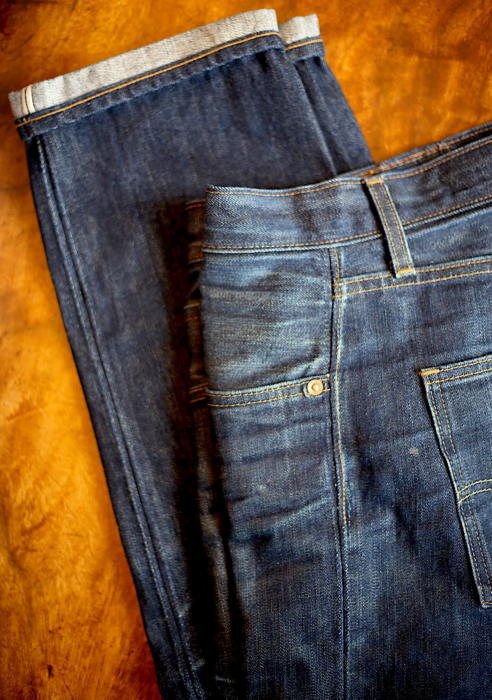
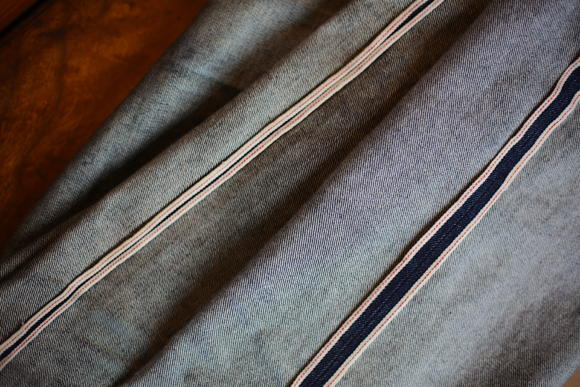
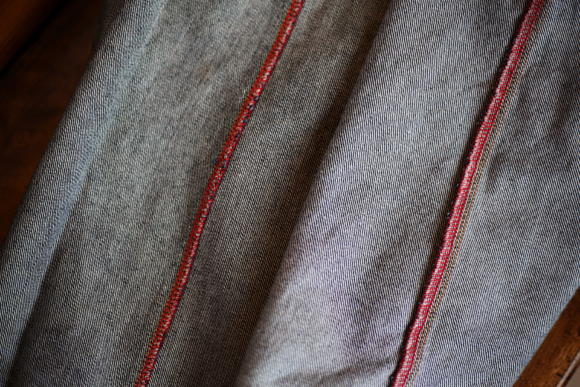
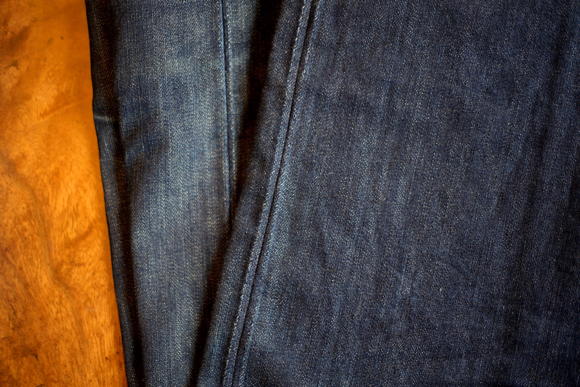
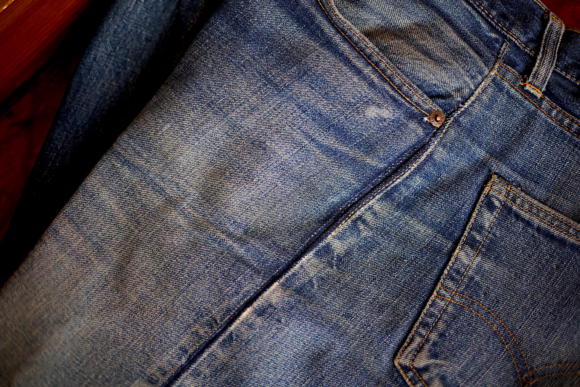
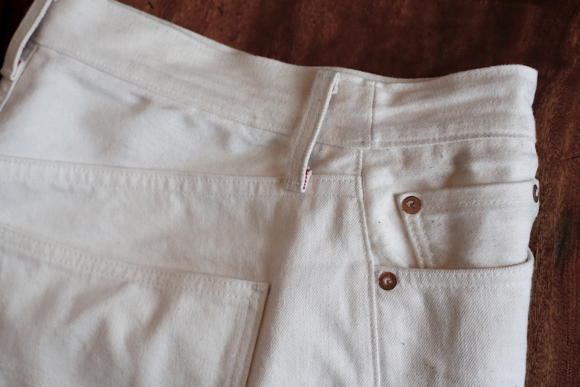
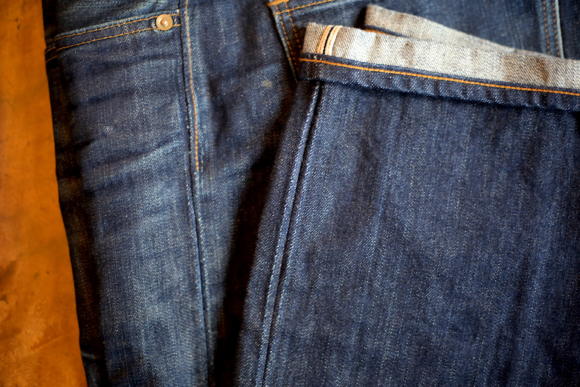
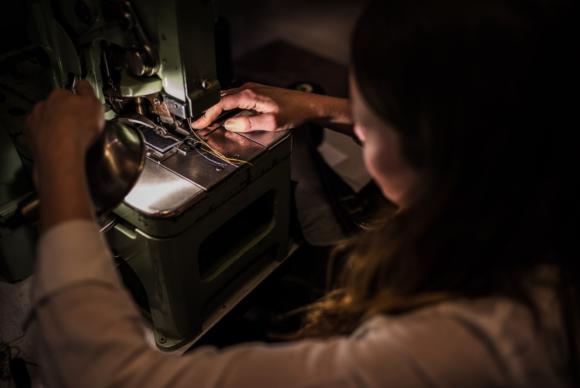
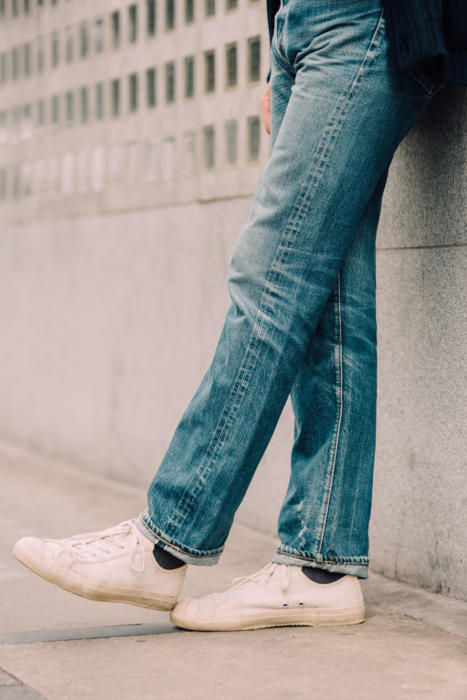






























Hi,
Thank you for the detailed article, Simon. In Paris, there is SuperStitch: Arthur, the founder, offers his own jeans on sale as well as repairing and mending any denims out there. His knowledge on jeans is rather encyclopedic. He has a website, an Instagram account, as well as a shop at 13 Rue Racine in the 6th arrondissement.
Hope this helps !
All the best,
Marcos
Yes, thanks Marcos
I would add my recommendation to Marcos’ for Super Stitch in Paris – Arthur really knows his denim and they now also stock Decka Japanese socks!
Hi Simon,
it is possible to shorten jeans and ‘replace’ the old hem, so the fading is kept. There would be a seam right above the hem, but not very noticeable if done right.
In the Netherlands Dutch Denim Repair is a good place to go to for repairs and alterations: https://dutchdenimrepair.com/
When commissioning bespoke jeans you could opt for some extra inlay just to be sure.
Thanks Paul, great recommendation.
I think shortening and replacing the hem would probably be a step too far. Having an extra seam there could look a little odd?
Hi Paul,
Yes it is possible to keep the original finish. It does involve cutting the denim and turning it back on itself, but when done properly it’s almost impossible to tell the difference.
Shortening old jeans is fine but you do need to go to someone with the proper chainstich machine like an old Union Special that pushes and pulls to create the pressure that forms the roping effect on the hem. Then wash and use a bit of sandpaper to age it a bit!
Also recommended by me
** Rivet and Hide and Field Denim in London
** Super Stitch in Paris
** Sashiko Denim in the Netherlands (but Sasiko is a whole other discussion…)
Great, thanks Paul.
Yes, I guess the fading on the hem of the jeans might eventually catch up too. It depends a little bit on how worn the jeans are. Some of my newer ones might be OK, but I don’t think it would work with those vintage ones.
Dutch Denim repair are excellent .They use a Singer – 47W70 industrial darning machine- patching and repair just add to the style. The more repaired the more they become casual wear. I have hemmed and repaired my own jeans-but they are black,so not so noticeable .
This is a great subject and an addition to the thought of dressing well, casually. It is interesting that you are so conscious about the alterations nor being visible. To me, (except for the hem, it just looks off when it is different from the rest of the jeans) it is almost commendable when you can see that they have been altered along the way (mend and make do, etc.).
I also would raise awareness of another aspect of fit for jeans: when buying raw denim, the fit is very different from what it will be after one or three washes. It is hard to approximate the changes in length and width. Knowing about the possibility of alterations, then, really comes in handy. Especially considering the inseam width can vary a few centimetres on different models.
Good point Daniel. That of course can be the attraction of raw denim, how it fits to you, but I would always recommend talking to a knowledgeable salesperson about how much they will shrink, and where. Few shrink horizontally, for example, narrowing the legs. But it can happen.
Thank you. Actually, the horizontal shrinkage is what usually kills the experience for me! They become too tight in the waist, seat and around the thighs when I sit down (and it is not that I am in a spiral of weight gain).
I also think that is why Resolute and Superstitch sell theirs as ‘one wash’.
Length is easy to prevent by going up a size or two and have an extra turn-up before the first wash.
It is true about knowledgeable salespersons, many of them are real denimheads! However, my experience has been mixed and I have heard several state even the opposite: “they should feel a little tight in the beginning, they will loosen up with wear”. Which is true only if sanforized. And many still adhere to the maxim of not washing the jeans, which I don’t.
Yeah, you have to watch out for that. It’s usually less than the vertical, but it can be a killer when it is there. I always ask about it.
I find both sanforised and unsanforised loosen up with wear – but, they only loosen up to a small extent, not as much as they will shrink. That’s the point of shrink to fit: they shrink down so they’re pretty tight, then your body/wear pushes them out where it needs to. But you still need to buy at the size that means it will shrink down to what you need.
Not washing them is more about getting the biggest fades – the whiskering, honeycomb etc. That happens less with one-wash jeans, and less the more you wash them yourself.
You’ll find that almost all the established Japanese makers offer one washed as well as raw. In my experience, the former is superior in every way. When you are dropping $300 on jeans, why make sizing a lottery?
For those state-side, Railcar Fine Goods does tapering for jeans — they taper on the inside part of the leg to preserve the selvedge. I used their services for a pair of Roy denim and was nothing but satisfied with their service.
I’d like to echo that. They are superb craftspeople and have excellent customer service. I’ve used their services for years on blowouts. They may be just a little bit more expensive than your local tailor, but they will not fail you.
Echo the recommendation for BLA at Coal Drops Yard – first class service on their own and other brand jeans
Hi Simon, great article!
About shorten the jeans this is something I had to dig into because I’m 5 7 high (1.71m), live in Brazil and Levi’s only imports the long version of their models.
This is what I found out. A good tailor can remove the distressed hem entirely, cut the jeans and reattach the distressed hem sewing from the inside. But there will be 2 problems:
1) there will be a noticeable “lump” where the trousers met the hem. But there’s an easy way out. The tailor can sew there from the outside so the lump will be gone. It’s almost invisible. You can only notice that if you they the trousers in your hand with a clause inspection.
2) this is the tricky one. When you shorten a jeans and cut it a lot (in my case I have to cut about 6 inches) you change a lot the silhouette of the trousers. My Levi’s 511 looked like a 501 which I kind of enjoyed. But my 501 looked like a female flare jeans and I had to had it tapered on the leg.
This is far from ideal but manageable if anyone comes across a nice pair of jeans or lives in a country where only the long model are imported.
Regards,
Vinny
Interesting, thanks Vinny. I can completely understand how the leg line would change.
It would be interesting to see how the sewing, outside and in, works on the jeans if you have anything to show there. Thanks.
There’s an irony to an article about the aesthetics of altered jeans when so many of them look as if they should have been consigned to the dustbin years ago. Another reason why defining beauty is such a difficult thing to do.
Very interesting piece, Simon. I had no idea such small alterations could have a strong effect.
I do have a question though: After some years, the front pockets of my jeans tend to get baggy and gap out, especially since I put things in them routinely — wallet and keys, and of course, my hands. I’ve often wondered if those pockets can actually be tightened, and if so, whether you have tried it. I have an excellent tailor I work with who is very skilled — for example, he does a beautiful job of picking the shoulders of sports jackets and narrowing them. So if it is at all possible, he would be able to do it. Can the sides of the pockets where they meet the seam be taken apart and tightened, without distorting the jeans?
I’m not sure to be honest. I think it might be tricky, and could distort other aspects of the fit. I guess I’d also (personally) see them as a natural aspect of wear and tear, which is the kind of thing I wouldn’t tend to alter
Hi Simon!
What is your opinion on black jeans?
Would it look good with black leather loafers which has not been of much use to me as i rarely wear black loafers?
I don’t wear black jeans, so I can’t comment really Ayush. I’d suspect most of the time I’d wear them with brown-suede loafers though
I always end up taking in the waist of all my jeans. They stretch out, and my waist is significantly slimmer than my thighs anyway. Some of my pairs have had to be taken in twice or thrice. Cutting the waistband really is no issue for me, since there’s a belt loop covering the seam anyway. So long as you’re taking in the fabric you’re not exposing a faded bit, and the new ridge or edge will fade back to match the rest of the jeans fairly quickly.
I’ve lost a bit of muscle mass in my legs so I’ve had to take in the thighs of most my pairs recently. However, as you’ve pointed out, taking those back out if I ever regain it will be impossible without them looking weird. I can do with slimmer jeans though; my taste has changed to prefer them over the roomier fit I used to aim for.
I have a related question, not about alterations but about mid blue jeans. I’d be interested to hear what other readers do when purchasing mid blue jeans, or more generally those which are not indigo. I want the benefits of a raw denim jean – the hardiness of the fabric, the fact that they soften to your shape – but I don’t want all my jeans to be a deep indigo, I want a lighter, mid blue to go with darker colours on the top half. Is there any alternative to buying prewashed jeans, where the material always seems very soft from the outset, and doesn’t seem to have the same hardiness and longevity as raw?
Hey Chris,
Basically, you need to get denim that is a bit more blue, rather than deep indigo. A lot of brands offer something like that – even if it looks quite dark when raw still.
And then you have to wash it and wash it. The kind of effect you’re after will likely come after 20-30 washes, rather than 3-5. So just wear them consistently and wash them often, say once a week for example. After leaving them unwashed for a while at the beginning, if you want those creases and lines to all wear in well etc.
S
Great article!
Im having thought’s about altering the waistband in my jeans, as they are a bit on the large side. Happy to see that you made this alteration and that it looks good, but how did you handle the excess fabric that i guess would gather below the waistband?
Kind regards
There’s no excess there – fabric is taken from the seam below the waistband as well
I had a pair of washed Nudie jeans taken in at the waist at Blackhorse Lane’s store in Coal Drops Yard, and was relieved and impressed with the result. The back seam was gently unpicked and re-sewn to taper the seat, and, as mentioned above, the centre back belt loop hides the discrete cut in the waistband.
As far as other recommendations go, Pinnas and Needles in Soho (featured previously in the blog) will also alter/repair denim, and I’ve seen promising pictures of there work on jeans.
I’ve had a few pairs of (mainline) Levi’s jeans hemmed by their flagship store on Regent St, including a raw selvedge pair for which they insisted on cutting and reattaching the existing hem. The result was fine; I don’t remember there being a particularly obvious stitch or join, though those jeans have since been given away due to other fit issues. These are probably the only alterations I would consider, but I have been burned a few times by horizontal shrinkage on raw jeans.
The Levi´s store here in Frankfurt used to offer an alteration services, not the fastest. The staff member who did the alteration left and they ceased to offer the service. I have yet to find someone (here in Frankfurt) who can shorten Levi´s whilst using the same style stiching as the original. I have a few pair of 501 CT which I would like to have shortened. Did you know if Lot No. 1 accept from outside of London, i.e. per post or DHL etc.?
My son wears black jeans and they look really good with a pair of Brown Suede Chelsea Boots.
With kind regards
Barry
Hey Barry,
I’m afraid Lot No.1 don’t really, no. They only do alterations really for customers in London. Sorry for not being clear about that.
Sounds great on the boots/jeans combo….
Hi Simon,
As usual, your articles provide interesting ideas and insights. I was wondering whether you would think it to be possible to alter selvedge chinos (like the armoury army ones), tapering the leg a bit, to obtain a narrower leg opening.
thank you,
Alexander
Hi Alexander,
Certainly it would, I’ve done this myself. You would just alter the inside leg, to keep the outside seam and selvedge.
S
Simon,
It has really been some time.
It is highly ironic for me to have stumbled on this article as just a moment ago I ordered two new pairs of jeans and have a few insights from the 6′-3″ and over side wearing jeans with cowboy boots winding up 6′-5″ tall to avoid tailoring jeans altogether. I feel compelled to comment because the last thing I want to encounter again is trying to alter denim, which for me has consistently been a disaster so I if I may shed my thoughts into buying new denim to potentially avoid alterations entirely.
I think you would agree denim in general today is rarely the same as it used to be decades ago in construction and fabrication, often it wears differently and shrinks disproportionately. This is why after brand trial and error I am back to a Texas brands iconic 13MWZ jean, a men’s rigid cowboy original that is marketed as true to fit. They are still the same dye, material and cut they have always been, and this is rare to find. I am done searching into the unknown for denim that outside of certain Japanese brands I have found turn out to be an entire waist of time and big money.
OK there is reasoning behind all this from experience to save alterations I am getting there. I have found denim requires highly accurate measurements taking into account how it is going to shrink, where and to what degree. You must know this ahead of time or you will be disappointed. Measurement is critical. The jeans may even claim they fit true to size yet I found with the brand ordered by recommendation having them washed inside out for the first three times in hot water these pairs I bought will loosen a tad in the hips and arse so again those measurements must be spot on and never larger. I have also found they do not loosen and shrink in proportion. While they ease in the waist and hips a bit they shrink up ever so slightly in the inseam. How they are made and shrinkage percentage are also key to measurement.
I want a good fit in denim from the get go, especially in the waist, arse, hips and thighs but that does not mean tight (I cringe at the skinny jean bit on men, which to me is just a sissy look on a man, another conversation entirely.) Furthermore, coming from a long line of Italian gentleman farmers and cowboys working the land and tending and rearing cattle on ranches with boots I require a bit of what in Texas is known as stack to the denim bottom. The last thing you want to look like and be called is a Goat Roper.
How do I take this all into consideration? I am no longer on the low side of a 32-34 waist but more right where I should be for my height, weight and muscle mass around 37.5 so to allow for variation after washing and wearing I go with a 38 waist in denim. I will however go up from my normal 34 inseam to a 36 inseam for cowboy boots and foot size for that stack described above, a side note on the importance of sizing I wear size 13 Lucchese cowboy boots. Some may recall years ago I commented here I was fluctuating between size 12 and size 13 for shoes and boots, since then a highly accurate new foot measurement shed light that all my shoes and boots should be a 13 wide up from a medium so contrary to what little men like to believe size does matter! No snickering from the cheap seats.
This article finely covered altering denim. I am trying to avoid it at all costs. I do not know Simon which brands you have tried over the years, or how the sizing shrinking aspects have worked for you. While too late for a “long story short” I have found if one element (often overlooked by men) is critical to the purchase of denim it would be the hip measurement width size. That is likely the single most critical factor overall in denim and how it will fit in the long run, almost as much as the inseam length.
This is a hot topic for me as I am these days very much a fine suede, leather, denim and boots guy over suits and ties. I hope some of this above saves some the horrors of altering denim. Enough from me, I have made up for years of silence.
Keep up the good work.
I’m visiting the Denim Doctor about a few alterations this week. The service was recommended to me by Rivet and Hide in Manchester, and I’ve just read this article. Did you know that he’s also second generation bespoke tailor? I have a commission in mind, so that’s of interest to me. My alternative is at least a couple of trips up and down the country, and it will be made-to-measure for a similar price.
That makes me wonder if readers of PS might appreciate more reviews of bespoke and made-to-measure services around the UK.
Thanks Josh. I didn’t know that, and that’s very interesting.
On makers around the UK, see article here. I’m always being asked about that, and set up that page to help make referrals. Unfortunately very few people have used it.
Do you happen to know if there are any similarly styled new jeans from Levis say which a mid rise and fairly slim but vintage faded look which would work with tailoring? I have tried a few but they have never worked out. Thanks.
I don’t Benjamin, sorry. Hence why I was so pleased with the Full Count pair I wrote about this week
Thanks Simon.
Hi Simon,
If I were to commission a pair of jeans, would you recommend getting a pair with no break, or would it be better to have a slight break to be able to turn it up? Or would it be ideal to have two pairs, to cover different situations and different shoes such as sneakers, loafers and chukkas?
Thanks
Just get one!
I’d have them with a slight break, to turn up. You can always adjust that by turning up more or less, but if there’s no extra length then you’re a bit stuck.